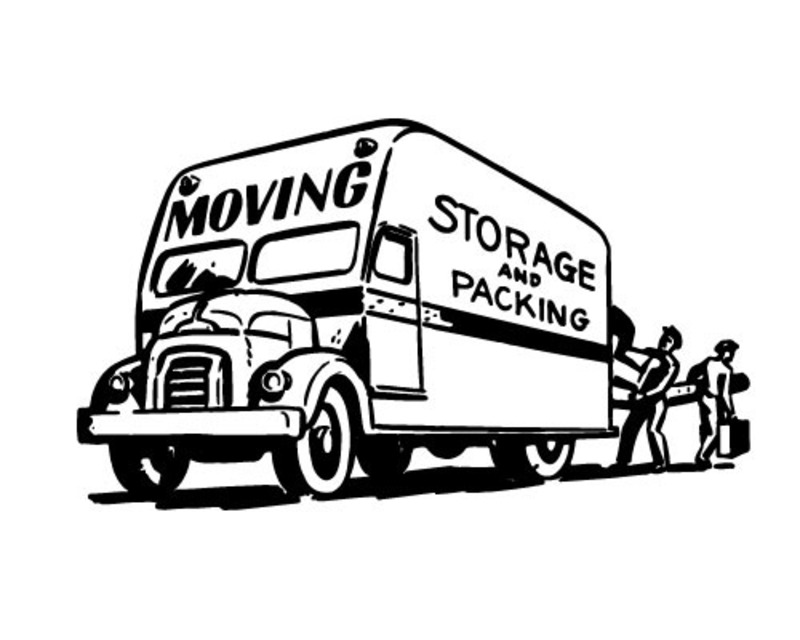What You Need for a Trouble Free House Move
Whether you're moving to a new city, upgrading to a bigger house, or downsizing, moving house can be one of life's most challenging events. But with the right planning and preparation, you can transform a potentially hectic move into a smooth, stress-free experience. In this comprehensive guide, we'll explore everything you need for a trouble free house move, including expert tips, essential supplies, and step-by-step strategies to ensure nothing is overlooked.
Why Proper Planning is Crucial for a Stress-Free House Move
A house move involves dozens of moving parts, from packing and transportation to utilities and change of address. Without a solid plan, it's easy to get overwhelmed. But when you organize and prepare in advance, you'll reduce anxiety, avoid costly mistakes, and make the transition seamless. Here's how planning helps ensure a trouble-free house move:
- Minimizes last-minute stress
- Reduces the risk of lost or damaged items
- Ensures utilities and services are set up on time
- Saves time and money by preventing unnecessary trips
- Makes unpacking and settling in much easier

Essential Steps to Prepare for a Hassle-Free House Move
1. Start Early and Create a Moving Timeline
The key to a successful, trouble-free move is starting early. Ideally, begin preparing at least 6-8 weeks before moving day.
- Create a moving checklist - List all action items, such as notifying your landlord, scheduling movers, gathering packing materials, and booking transportation.
- Set deadlines - Assign dates to each task to keep yourself on track.
- Reserve your moving day - If you're hiring professionals, book them as early as possible, especially if you're moving during the busy summer season.
- Notify your employer - If you'll need time off work, inform your employer in advance.
2. Declutter Your Home
One of the easiest ways to achieve a trouble-free move is to lighten the load. Decluttering makes packing faster, moving cheaper, and unpacking easier.
- Sort through each room and separate items by what you want to keep, donate, sell, or throw away.
- Organize a garage sale or use online marketplaces to sell unwanted items.
- Donate usable goods to local charities or shelters.
- Properly dispose of broken or hazardous items.
3. Gather Quality Packing Supplies
Packing your belongings safely is crucial for a smooth house move. Gather essential moving supplies:
- Sturdy boxes in various sizes
- Bubble wrap and packing paper
- Heavy-duty packing tape
- Markers for labeling
- Ziplock bags for small parts (like screws and remote controls)
- Furniture blankets or padding
Tip: Don't overload boxes--pack lighter items on top and heavier ones on the bottom for stability.
4. Organize Important Documents
To avoid headaches during your house move, keep all your essential documents organized and accessible:
- Passports and identity cards
- Birth certificates and insurance papers
- Rental or purchase contracts
- Utility bills and service agreements
- Medical records and prescriptions
Store important documents in a clearly labeled folder or a fireproof box, and keep them with you during the move.
5. Notify Relevant Parties of Your Move
Updating your address is crucial for a trouble free house move:
- Post office - Set up mail forwarding
- Banks and credit card companies
- Utilities (gas, electricity, water, internet)
- Insurance providers
- Doctor and dentist offices
- Work and school
- Online subscriptions and retailers
Packing Like a Pro for a Trouble-Free Move
Efficient Packing Strategies
Poor packing often leads to broken items and chaos when unpacking. Follow these best practices to ensure a stress-free house move:
- Pack one room at a time - Label each box clearly with its destination room and list of contents.
- Wrap fragile items in bubble wrap or towels, and clearly mark boxes as "fragile."
- Keep essentials separate - Pack a first-night box with toiletries, a change of clothes, medication, chargers, and snacks.
- Disassemble furniture - If possible, disassemble large furniture to prevent damage and make moving easier.
- Seal boxes securely - Use strong tape to keep boxes closed and protected during transit.
Labeling and Inventory Management
Taking a detailed inventory reduces anxiety and ensures nothing is lost during your move:
- Number each box and maintain a spreadsheet or handwritten log noting contents and destination room.
- Color-code boxes by room to make unloading and unpacking straightforward.
Protecting Your Valuables
- Transport valuables such as jewelry, important documents, and electronics in your own vehicle where possible.
- Record serial numbers and take photos of electronics or high-value items for insurance purposes.
Choosing the Right Moving Option
Professional Movers or DIY?
The right choice depends on your budget, time constraints, and the size of your move.
- Professional moving companies provide experience, efficiency, and often liability insurance. They're ideal for long-distance moves or when you have fragile or high-value items.
- DIY moves with rented trucks can be cost-effective for smaller moves but require careful planning and plenty of manpower.
Research moving companies, read reviews, and obtain multiple quotes before making your decision.
Questions to Ask Potential Movers
- Are you insured and licensed?
- Do you provide packing materials and services?
- Are there any additional fees?
- What is your policy on fragile and valuable items?
- Can you provide references?
Moving Day: Ensuring an Easy and Organized Move
Preparation is Everything
- Confirm arrangements with movers or helpers the day before.
- Make sure all boxes are packed, labeled, and easily accessible.
- Take photos of your old home (to document its condition for landlords or the next owners).
- Prepare snacks and drinks for yourself and anyone helping
- Keep a cleaning kit handy for last-minute touch-ups
Moving With Pets and Kids
A trouble-free move is all about minimizing stress for your whole family, including pets and children.
- Arrange for childcare or pet care on moving day, if possible.
- Pack a special bag with your child's favorite toys and snacks.
- Keep pets in a quiet, secure area until it's time to leave.
Final Checks Before Leaving
- Walk through every room to ensure nothing is forgotten.
- Shut off all lights, appliances, and water taps.
- Secure doors and windows.
- Take final meter readings and photos for your records.
- Leave keys and instructions (as agreed) for the new occupants.
Settling Into Your New Home: The First Week Essentials
Unpacking Efficiently
- Start with essentials boxes for day-to-day needs.
- Tackle the kitchen and bedrooms first, then move on to less critical areas.
- Use your inventory list to check off items as you unpack.
Safety and Security Checks
- Change locks and update security codes
- Test smoke alarms and carbon monoxide detectors
- Locate the main water shut-off valve, fuse box, and gas shut-off
Set Up Utilities and Services
Transfer or install important services promptly:
- Electricity, gas, and water
- Internet and television
- Waste disposal and recycling collection
Register With Local Services
- Register with a local doctor and dentist
- Update your details with schools and childcare providers
- Register your car at your new address, if required
Top Tips for a Smooth and Trouble-Free House Move
- Be realistic about what you can do yourself - Don't hesitate to ask for help from friends, family, or professionals.
- Plan for the unexpected by creating a backup plan in case of delays or bad weather.
- Pack a 'First Night Bag' with essentials, so you can relax and recharge after unloading.
- Stay flexible and patient - not everything will go perfectly, but a positive attitude helps immensely.
- Communicate regularly with everyone involved in the move to avoid misunderstandings.

Common Pitfalls to Avoid During a House Move
- Leaving packing to the last minute - This adds stress and increases the likelihood of forgotten items or damage.
- Underestimating how much stuff you have - Moving professionals can help you estimate truck sizes or storage needs.
- Not measuring furniture and doorways - Ensure your biggest items will fit through doors, staircases, or elevators at both properties.
- Forgetting to update your address - Missed bills or lost mail can cause major headaches.
- Ignoring insurance - Consider both moving insurance and checking your home contents insurance for coverage during transit.
Conclusion: Enjoy a Trouble-Free House Move with Planning and Preparation
A smooth, stress-free house move is absolutely achievable with the right planning, organization, and mindset. By following the steps and tips outlined above, you'll minimize chaos and maximize your chances of a positive experience. Remember: start early, declutter, pack carefully, and seek help when needed. With a methodical approach, your house move can be a fresh, exciting beginning rather than a dreaded ordeal. Wishing you a truly trouble-free move and a warm welcome to your new home!
Your House Move Checklist
- Plan early and book services ahead
- Declutter and donate or sell what you don't need
- Gather all packing materials and supplies
- Pack smartly and label everything
- Organize essential documents and valuables
- Notify all relevant parties of your change of address
- Confirm arrangements and prepare for moving day
- Unpack essentials and set up services in your new home
Follow this complete guide to enjoy a seamless, trouble-free house move--because moving home should be the start of a new adventure, not a source of stress!